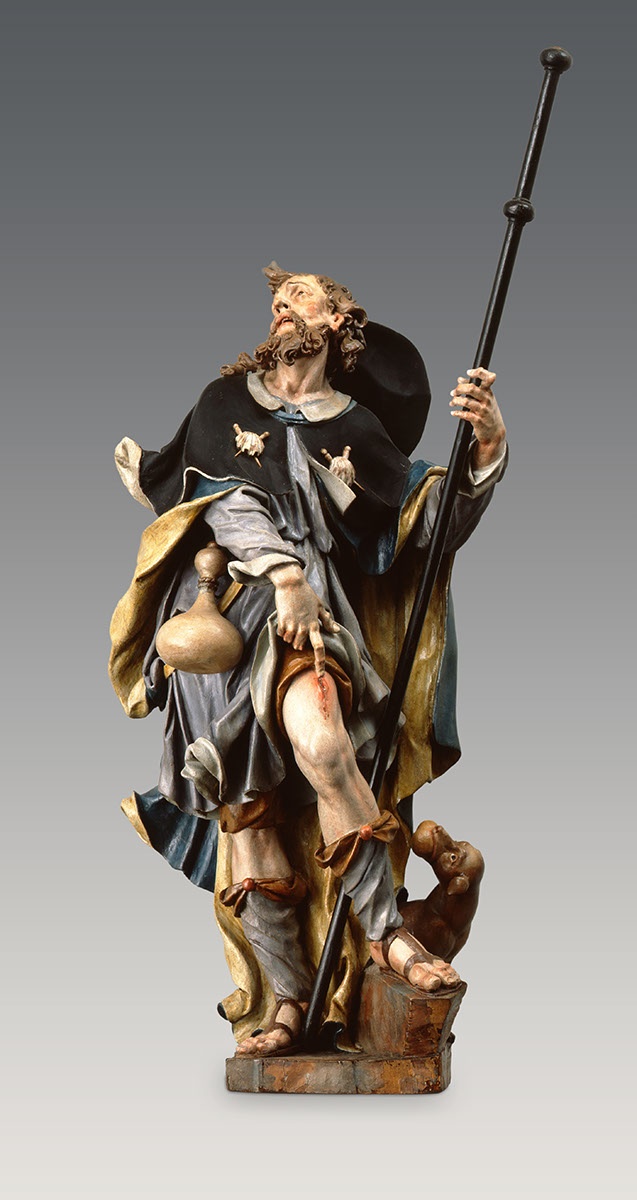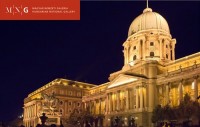The wooden figures of Sebastian and Roch, saints commonly depicted in the Baroque period, are from the tabernacle altar of the parish church of EgervĂĄr, Zala. Commissioned by count IgnĂĄc SzĂŠchĂŠnyi, the patron of the church with connections to Graz, they were created by Philipp Jakob Straub, an excellent and influential representative of Styrian Baroque sculpture.The two saints who warded off the Plague are the embodiments of pain and suffering. Wearing pilgrimâs clothing, Saint Roch looks upwards with an expression of pain, his lips opened in exclamation, while his hands point to the wounds on his feet. Next to him appears a dog that brought bread to him when he was ill with the plague. The martyr, Saint Sebastian, who is pinned to the tree and wounded by arrows, bears the pain philosophically, acquiescing to his fate. His head falls to his shoulder and tears stream from his closed eyes. This pair of statues stands out among other Hungarian Rococo sculptural works because of the outstanding modelling, the fine, restrained use of colour, and the deeply felt expressions of feeling.
en

